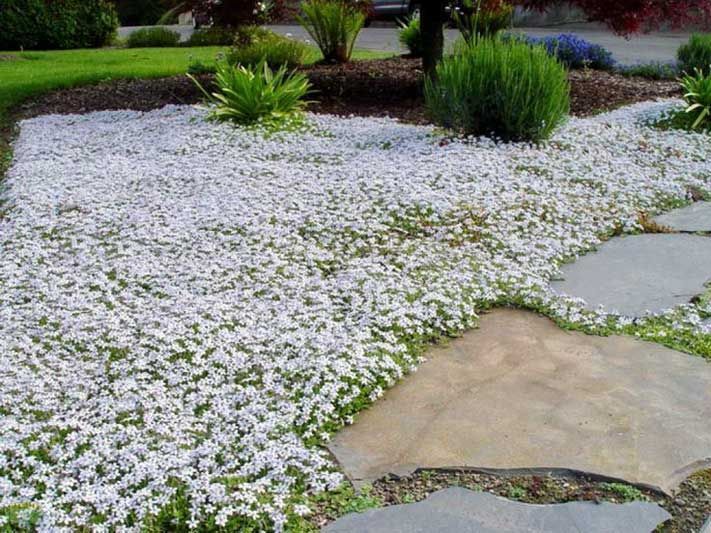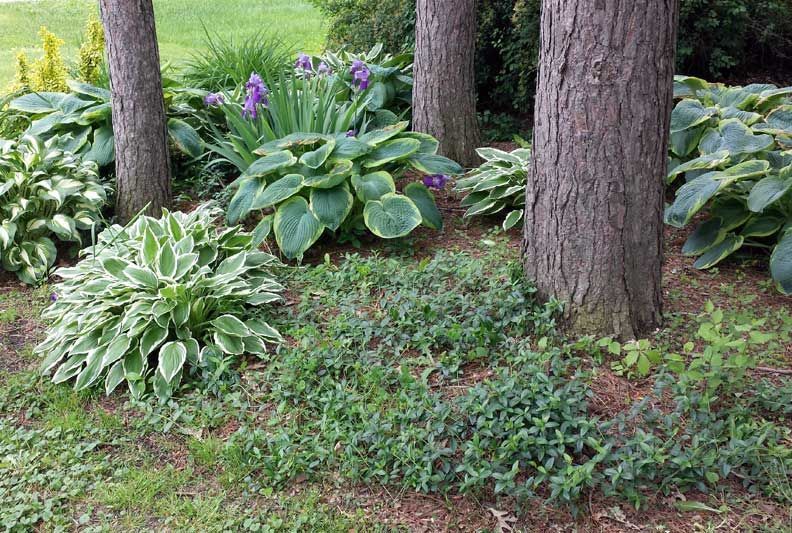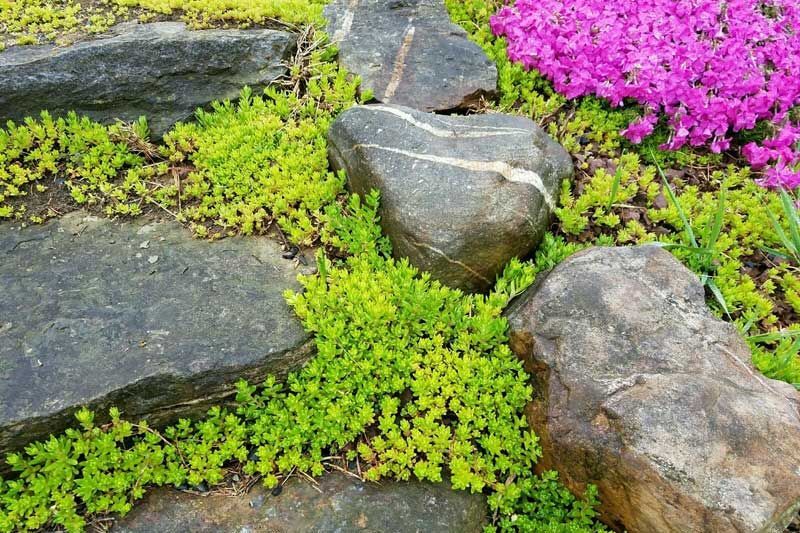Optimal Use of Ground Cover in Landscaping
Ground cover is a conundrum for many homeowners. They are slightly more work to take care of than a standard plant because of their smaller, spreading nature. If you use the wrong kind, they can be very invasive and take over an entire plant bed. There are a wide variety of choices so knowing which ones will compliment and fit in with the surrounding plants can also be a challenge. However, with some good landscape design and past experience, every plant bed can benefit from having the beauty of these wonderful plants.

Put ground cover in places people will see it
This seems like an obvious first step but it’s an important one! Ground cover doesn’t get much higher than 6″ off the ground so placing it in strategic spots where it can be viewed is essential. Here at KG Landscape, we like to place it near the driveway and walkways into the front door. That way every time the homeowner gets home or a guest comes to the door, they get to appreciate and see the ground cover. Placing them at the front of the plant bed allows them to be front and center and create levels to the plant bed (ground cover, then perennials, then shrubs).

Mix up plant textures and colors
Like other plants, ground covers have many different textures that can add a lot of interest to any landscape. The two types of ground cover we use most often are a sedum and vinca. The sedum has waxy, thick leaves and many different colors to choose from. The vinca has softer leaves and only a few color options. Mixing ground cover in front and then roses in back is often a great choice. We also like to have the dark green sedum or vinca with brighter perennials behind it like grasses or echinacea. Dsigning it around landscape boulder outcroppings to help mitigate the sharp hard surfaces of the boulders is also a good idea.

Use it in spaces where other plants won’t work
Ground cover works great in areas around trees. The roots of the tree can make growing plants with large root systems tough so the spreading shallow roots are a perfect match. They also fit in well around flagstone steppers where the spaces between stones are small and not uniform. The ground around evergreens can get very nutrient depleted so ground cover works really well around there too.
It can seem easy to pick out and set up your ground cover and other plant bed items. However, we strongly suggest consulting with a landscape designer. An experienced landscape designer
will help pick the right plants and put them in the right locations so when everything is fully grown, it looks beautiful. KG Landscape has been designing and installing all varieties of outdoor spaces all across the Twin Cities metro for over 10 years. If you’re interested in having us out for a free consultation, give us a call or visit our quote page
and we’ll get back to you quickly.










